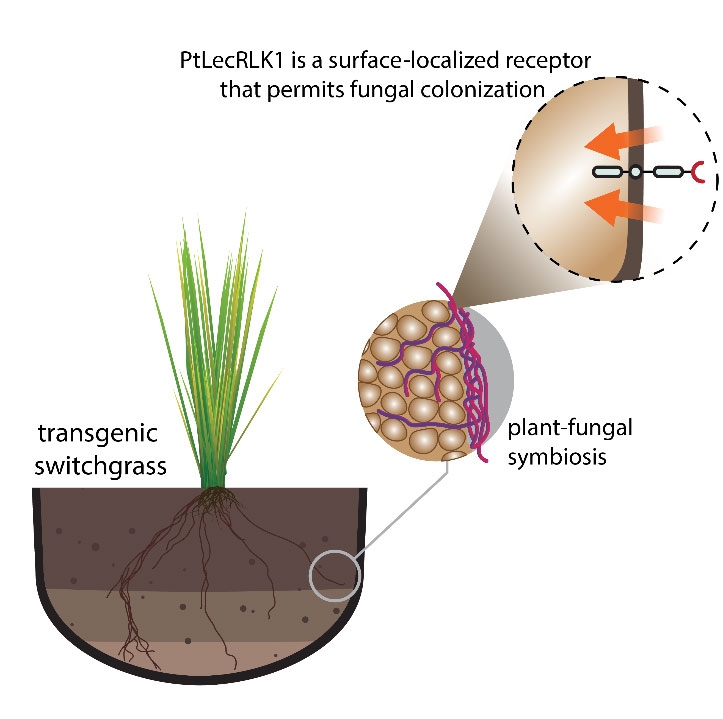The Science
Soil fungi known as ectomycorrhizae (ECM) can penetrate plant roots and provide water and nutrients to host plants in exchange for sugar. This symbiotic relationship benefits the plant, increasing its growth. To benefit from these fungi while protecting themselves from harmful ones such as pathogens, plants have evolved a complex layer of regulation that determines which fungi can inhabit their root system. Researchers recently identified the underlying plant signaling processes within this layer of regulation that permits an ECM species to colonize roots.
The Impact
Improving plant health and growth under adverse conditions is important for sustainable ecosystems. This research provides a detailed understanding of how a single gene can reprogram molecular pathways to permit beneficial fungi to colonize plant roots. Understanding these signaling pathways will help scientists develop new strategies to selectively engineer for beneficial symbiosis while leaving the door closed to pathogens. This will lead to strategies to breed plants for improved productivity and sustainability.
Summary
In a previous study, the researchers identified a G-type lectin receptor-like kinase (PtLecRLK1) as a genetic factor that permits root colonization of a beneficial fungus, Laccaria bicolor, in Populus trichocarpa. The scientists have shown that this single gene can be genetically engineered into non-host plants, like switchgrass, to permit fungal colonization similar to what we observe in its native host. Located at the surface of plant root cells, PtLecRLK1 recognizes the presence of L. bicolor and reprograms intracellular signaling to permit its colonization.
In this study, the researchers used mass spectrometry-based phospho-proteomics to identify relevant signaling pathways associated with PtLecRLK1 expression in switchgrass. The team’s findings show that PtLecRLK1 interferes with plant defense mechanisms to facilitate the establishment and maintenance of L. bicolor colonization.
Contact
Paul Abraham
abrahampe@ornl.gov
Oak Ridge National Laboratory, Biosciences Division
Jin-Gui Chen
chenj@ornl.gov
Oak Ridge National Laboratory, Biosciences Division
Funding
This work was sponsored by the Department of Energy Office of Science, Biological and Environmental Research program’s Genomic Science Program as part of the Plant-Microbe Interfaces Scientific Focus Area.
Publications
Shrestha, H.S., et al., Lectin Receptor-like Kinase Signaling during Engineered Ectomycorrhiza Colonization. Cells 12, 1082 (2023). [DOI: 10.3390/cells12071082]
Scraped from https://www.sourcearu.com
